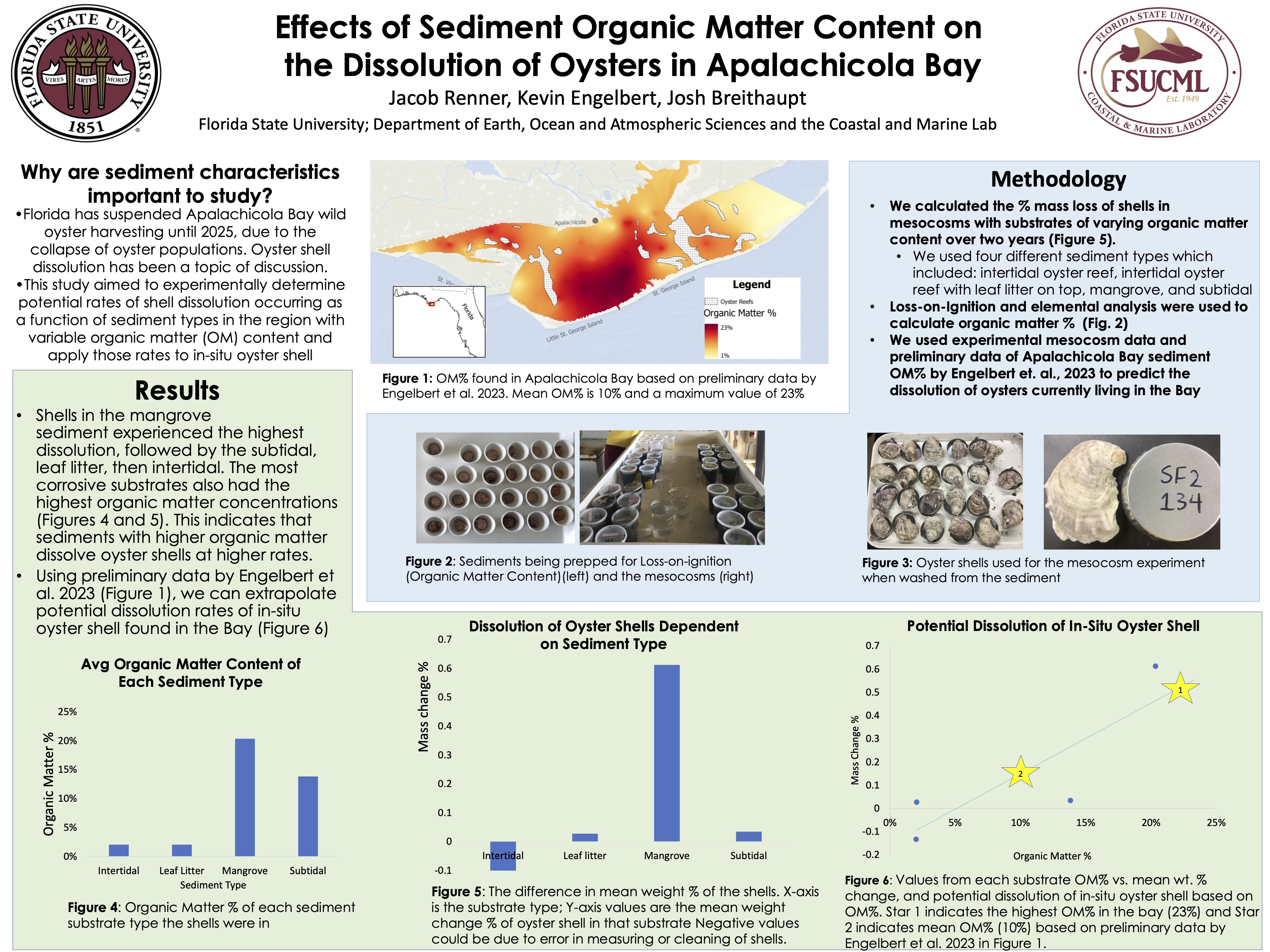Research Symposium
23rd annual Undergraduate Research Symposium, April 6, 2023
Jacob Renner Poster Session 3: 2:45 pm - 3:45 pm/ Poster #137

BIO
I was grew up in Jupiter Florida where I did all kinds of activites that fostered my love for the environment such as: fishing, hiking snorkeling, and more. I went to FSU to study environmental science and have started volunteering in the Coastal and Marine Lab at FSU where I came to a liking of biogeochemistry. With the knowledge and experience I have gotten here so far, I would like to use it to become an Environmental Scientist either working for the state or a consulting firm in the future.
The Effects of Sediment Organic Matter Content on the Dissolution of Oysters in Apalachicola Bay
Authors: Jacob Renner, Kevin EngelbertStudent Major: Environmental Science
Mentor: Kevin Engelbert
Mentor's Department: Earth Ocean and Atomospheric Science Mentor's College: Florida State University Co-Presenters: none
Abstract
In the Apalachicola Bay, the oyster fishery is both economically and culturally important to the region. However, the oyster fishery has been closed until 2025 due to its dwindling population. In this project, I analyzed the effects that different sediment substrates found within the bay have on the rate of oyster shell dissolution. The sediment substrate types were mangrove, subtidal oyster reef, intertidal oyster reef, and intertidal oyster reef with mangrove litter. This experiment was conducted in mesocosms where pH and shell mass loss were periodically measured over two years to measure the corrosivity of each substrate. Tidal mangrove substrate exhibited the largest difference in mean weight percent. This is as hypothesized as this sediment substrate had the highest organic matter content. This suggests that oysters could have a harder time settling and thriving in locations with high levels of organic matter and low ph. I aim to relate this finding to the organic matter concentrations naturally found in subtidal sediment where, historically, most oysters have been found in the Apalachicola Bay. This will be done by comparing organic matter % currently found in the Bay based on preliminary data by Engelbert et al. 2023. The relationship between high organic matter % and shell content could have a correlation to the recent increase in mangrove populations along the barrier islands or river export changes; both inputs to the system have the potential to increase organic matter in benthic sediment.
Keywords: Biogeochemistry, Dissolution, Eutrophication, Oysters, Apalachicola


